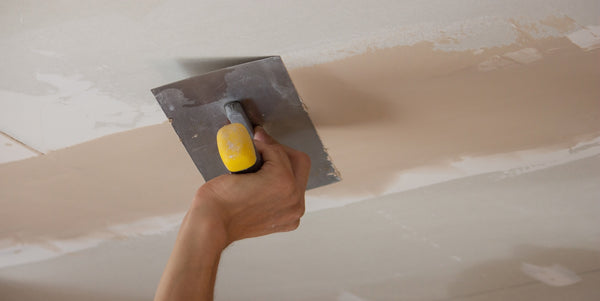13 DIY Skills Every Homeowner Should Learn (Before Calling a Pro)

Jump to:
For a homeowner, DIY skills mean much more than saving money: it's all about self-reliance, creativity, and pride taken in keeping your living space up to date.
Do-it-yourself home improvement includes anything from painting the walls to fixing leaky faucets to building furniture. In brief, DIY skills are those that let you fix everyday home issues and add a personal touch to your space.
How Can You Learn DIY Skills?
Learning DIY doesn't require a degree, just curiosity and consistency. You can start with:
-
Online tutorials and YouTube channels
-
Local community workshops in carpentry, plumbing, or electrical work.
-
DIY websites and blogs with detailed project outlines
-
Trial and error: small projects help you build confidence.
The best way to put your DIY skills to the test is by starting small, using reliable sources, and learning from each project. Here are 13 essential DIY skills to help you get started and grow your abilities step by step:
1. Finding Wall Studs and Using Anchors

Before hanging shelves, mirrors, or artwork, locate wall studs for proper support. Studs are wooden beams behind drywall that give walls strength. Use a stud finder for accuracy, or tap the wall and listen for a solid sound rather than a hollow one, then mark spots clearly with a pencil.
If you can't find a stud where needed, use wall anchors. They distribute weight evenly across drywall, preventing cracks or holes. Choose the right anchor for your material, drill carefully, and insert the anchor before screwing in your fixture.
Proper use of studs and anchors keeps walls intact and ensures safety and stability for anything you hang.
2. Patching Drywall and Repairing Holes

Holes and dents in drywall are almost inevitable, whether from a misplaced nail, doorknob bump, or small accident. Fortunately, patching drywall is simple and satisfying. Clean the damaged area to remove dust or debris. Apply spackle or joint compound with a putty knife, spreading evenly to fill the hole.
Once dry, sand the area smooth with fine-grit sandpaper until level with the wall. Wipe away dust and repaint for a seamless finish. With practice, you can make walls look new without calling a contractor for minor damage.
3. Unclogging Drains Without Harsh Chemicals

Clogged drains are a nuisance, but they don't have to be costly or poisonous. Pass on chemical cleaners that corrode pipes and try safe eco-cleaning methods. Put half a cup of baking soda down the drain, followed by half a cup of vinegar. Let it bubble for 10-15 minutes as it breaks down grease and grime, then flush with boiling water.
If that doesn't work, use a drain snake or plunger to dislodge it manually. Regular cleaning with baking soda and hot water prevents future blockages and keeps your plumbing in shape.
4. Performing Preventative Home Maintenance

The secret to keeping your home in great shape and avoiding costly repairs is simple preventative maintenance. Clean gutters each season to prevent water damage, replace filters every 1-3 months for better air quality and efficiency, and check caulking and weather stripping around windows and doors for drafts.
Don't forget safety checks: test smoke and carbon monoxide detectors monthly and replace batteries yearly. Inspect plumbing for leaks and clean dryer vents to reduce fire risks. Dedicating a little time to these routines extends your home's systems and provides peace of mind by preventing bigger problems before they start.
5. Painting Walls and Applying Wallpaper

Few projects transform a room faster than fresh paint or stylish wallpaper - it’s especially great at transforming your personal spaces, such as during a bedroom renovation. Prepare by cleaning and sanding walls, applying painter's tape along trim and edges, and covering floors with drop cloths. Use primer if painting over dark colors or raw drywall for better adhesion and vibrancy.
When painting, use a brush for corners and edges, then a roller for large areas. Apply multiple thin coats rather than one thick coat for a smooth finish. For wallpaper, ensure surfaces are smooth, measurements exact, and patterns matched before applying. Patience and precision make the difference, both can deliver professional-looking results.
6. Fixing Leaky Faucets and Running Toilets

A dripping faucet or running toilet may seem minor, but they waste gallons of water and increase utility bills. Most leaks stem from worn washers, O-rings, or cartridges, simple parts that cost pennies and can be replaced with basic tools. If you ever embark on a kitchen renovation, this is probably the first thing you’ll want to tackle.
For running toilets, check the flapper valve inside the tank. If warped or nerve water, and give you accomplishment each time you stop that drip.ot sealing properly, replacing it usually solves the problem instantly. Tighten loose connections and check the fill valve for proper water levels. These quick fixes save money, cons
7. Using Power Tools Safely

Working with power tools makes DIY work easier and more precise when used properly. For beginners, three essentials are a cordless drill, sander, and jigsaw. Learn how each works by reading manuals and watching tutorials. Always wear safety goggles, gloves, and ear protection, and ensure your workspace is well-lit and clutter-free.
Double-check measurements before drilling or cutting, and secure materials with clamps. Keep cords out of your path and unplug tools when changing bits or blades. Practice handling tools confidently before tackling bigger projects like furniture building, laying laminate flooring, or full renovations. Safety and patience build trust in your tools and yourself.
8. Installing Shelving and Wall Storage

Adding shelves or wall storage is one of the most practical ways to improve space and organization. Decide where your shelf will go and measure twice for even placement. Use a level to keep lines straight and mark bracket positions. Screw directly into wall studs for maximum stability whenever possible.
If studs aren't available, use heavy-duty wall anchors that handle the load. Double-check weight limits before placing heavy items. Once mounted, decorate and organize shelves to maximize style and function. Installing shelving boosts storage capacity and builds confidence in drilling, measuring, and mounting.
9. Replacing Light Fixtures and Switches

Changing a light fixture or wall switch is a rewarding beginner electrical project. Safety first: turn off power at the circuit breaker and test wires with a voltage detector to ensure no current flows. Remove the old fixture carefully, noting wire connections.
Attach the new fixture's wires by matching colors: black to black, white to white, and green or copper for grounding. Once secure, restore power and test. For switches, ensure the new one matches the old one's amperage and type. This skill lets you update lighting confidently, adding functionality and flair to your home.
10. Basic Carpentry and Measuring Skills

Carpentry is a core DIY skill that opens endless possibilities, from building shelves to repairing furniture. Learn to measure accurately using a tape measure, speed square, and pencil. Always remember: "Measure twice, cut once." Practice cutting wood with a handsaw or circular saw, and smooth rough edges with sandpaper.
Join wood using screws, nails, or wood glue depending on your project. Understanding how wood behaves helps you create durable pieces. With basic carpentry skills, you can tackle projects confidently and create custom furniture tailored to your home's style.
11. Fixing Door Hinges and Handles

Squeaky or misaligned doors often require little effort to repair. For squeaks, apply lubricant like WD-40 to hinge pins and work it in by swinging the door several times. For doors that won't latch, check for loose hinges; tighten screws and shim the door to hang level in its frame.
If the handle is loose, remove it and look for stripped screws or worn parts; replace or realign them. Sometimes a sticky latch just needs the strike plate adjusted slightly. Maintaining doors and handles keeps them functioning well and makes your house look polished and well maintained.
12. Caulking and Sealing Gaps
Proper caulking is one of the simplest ways to maintain an energy-efficient, watertight home. It seals cracks around windows, sinks, tubs, and baseboards to prevent leaks, mold, and drafts. Choose the right caulk: silicone for wet areas like bathrooms, latex for dry areas or trim. Before applying, remove the old caulk, clean the surface, and ensure it's dry.
Cut the nozzle at a 45-degree angle and apply a steady bead along the gap. Smooth it evenly with your finger or caulking tool for a professional finish. Let it dry fully before exposing it to moisture. This quick fix enhances comfort, saves energy, and keeps your home neat and sealed.
13. Maintaining Lawn and Garden Tools

Your outdoor tools are an investment; keep them in top shape by cleaning and storing them properly. After each use, wipe off dirt, grass, and moisture to prevent rust and buildup. Regularly sharpen blades on shears, mowers, and pruners for clean cuts and reduced plant stress. Store tools in a dry, protected location out of the weather, hung or arranged on racks to avoid tangles and damage.
At season's end, lightly oil metal parts before winter storage. Regular maintenance extends your tools' life and makes gardening and yard work easier, faster, and more enjoyable.
Essential Tools and Materials for DIY Projects

Every successful do-it-yourselfer starts with basic tools. A starter toolkit should include a hammer, screwdrivers, tape measure, pliers, and adjustable wrench for most everyday fixes. For bigger jobs, invest in power tools, a drill/driver, sander, and jigsaw, to make tasks quicker and more precise. For wall projects, gather painting supplies like rollers, brushes, painter's tape, and drop cloths for clean results.
Plumbing tools like plumber's tape, a pipe wrench, and a plunger will help tackle leaks and clogs efficiently. Don't overlook safety gear like gloves, goggles, and dust masks. Round out your collection with a level, utility knife, and extension cords for convenience and accuracy. Start small, buying tools as needed. Quality equipment costs more upfront but delivers easier projects, safer work, and lasting durability.
Common DIY Mistakes (and How to Avoid Them)
Even enthusiastic DIYers make mistakes. The most common is skipping preparation. Always clean, measure, and plan before starting. Another major mistake is ignoring safety gear; protect your eyes, ears, and hands first. Beginners also misuse materials, so read labels and follow product recommendations carefully.
Finally, overestimating your skills can cause frustration or costly errors. It's okay to stop, research, and learn before proceeding. Remember, patience and preparation are keys to DIY success, not perfection.
When to DIY and When to Hire a Professional
DIY works well for small, simple, low-risk projects like painting, hanging shelves, or minor leaks. It builds experience and saves money. However, for jobs involving rewiring, gas lines, or structural modifications, call a professional, because mistakes here are unsafe and costly. Unless you have the right tools and confidence, bring in an expert for complex work.
Knowing when to hire help shows good judgment, not inability. Understanding your limits is part of mastering DIY. Home improvement is a lifelong process, you should celebrate the small victories, stay patient, and never skip safety steps. Every project builds learning and pride. Mastering these DIY skills gives homeowners confidence for common repairs, saves money, and deepens home appreciation. Start small, stay safe, and keep at it, because your toolbox and skills will grow faster than you think.

0 comments